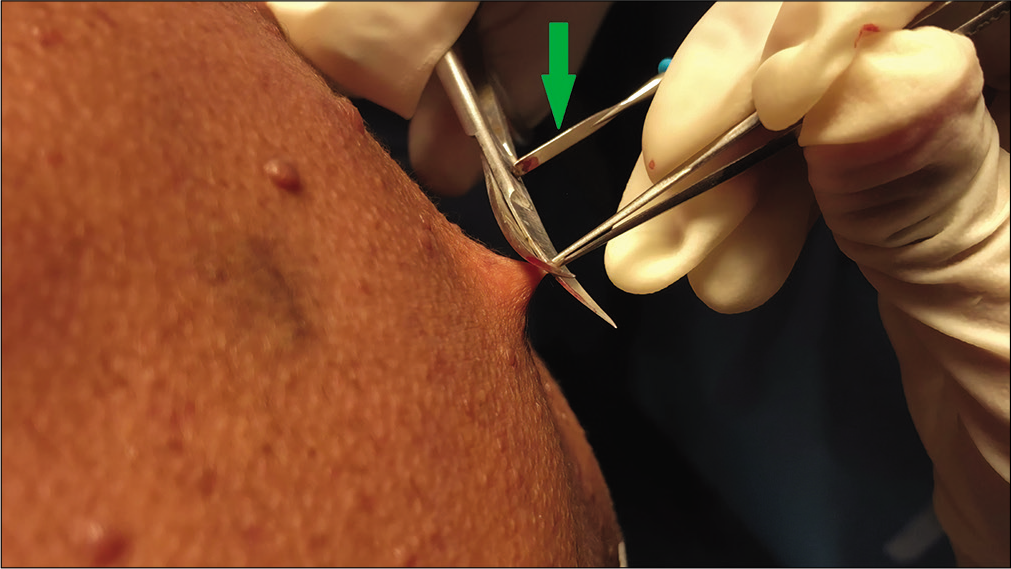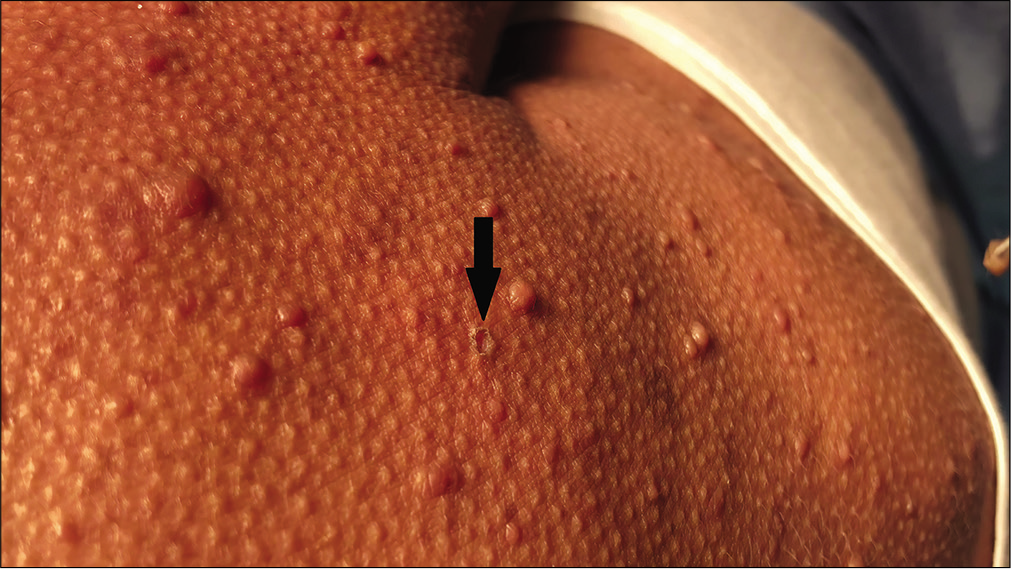Translate this page into:
Electromechanical resection: A novel method for quick, bloodless removal of multiple benign lesions
Corresponding author: Dr. Somesh Gupta, Department of Dermatology and Venereology, All India Institute of Medical Sciences, New Delhi, India. someshgupta@hotmail.com
-
Received: ,
Accepted: ,
How to cite this article: Pangti R, Gupta S. Electromechanical resection: A novel method for quick, bloodless removal of multiple benign lesions. Indian J Dermatol Venereol Leprol 2022;88:435-6.
Problem
In patients with multiple, small benign growths up to 1–2 cm diameter such as acrochordons, filiform warts and neurofibromas, bipolar or monopolar radiofrequency resection in ‘cut and coagulation’ mode is recommended.1 However, monopolar radiofrequency ablation can be associated with bleeding, smoke generation, charring, scab formation \slow healing and is time-consuming as coagulation is required to control the bleeding post excision. Bipolar forceps are unavailable with most machines used for dermatologic surgery.
Solution
We propose combining radiofrequency energy with a curved scissor excision to reduce the excision time, eliminate bleeding and need for anesthesia. This helps in removing multiple lesions quickly.
The lesion is gently pulled with a fine-toothed forceps, and its base is severed with a scissor, simultaneously touching the monopolar electrode tip in ‘coagulation’ mode to the hinge of scissor blades. The low power radiofrequency energy (10–20 W, 500–4000 kHz)2 is transmitted to the tip of scissor as metal is a good conductor.3
Electrocoagulation energy with mechanical resection is used simultaneously in this method of ‘electromechanical resection’ [Figures 1a, b and Video 1]. This combination ensures a quicker procedure along with faster healing and better aesthetic outcome, as minimum energy is utilized. The swift procedure reduces the chance of local pain, however topical or infiltrative anesthesia may be used for multiple lesions or an apprehensive patient. Suturing is recommended in large lesions for faster healing.

- Resection of neurofibroma using electromechanical resection technique. The scissors resection is done while the electrosurgical probe (green arrow) is touched to the scissors to achieve completely bloodless resection

- Immediate post-procedure, there is no bleeding, charring and crusting at the surgical site (black arrow)
Care should be taken to avoid the contact of scissor tips with surrounding skin to prevent unwanted burns. To achieve this, the lesion can be gently pulled up or the surrounding skin can be insulated using a sterile paper (e.g. inner cover of the disposable gloves), protruding the lesion through a hole made in it. However, this cumbersome insulation maneuver may be skipped if the operator remains careful. The need of an assistant to touch the radiofrequency probe with scissors is a limitation of this technique.
Financial support and sponsorship
Nil.
Conflicts of interest
There are no conflicts of interest.
Videos available on:
References
- Bipolar forceps of a high power electrosurgical unit for precise removal of small benign skin lesions. J Am Acad Dermatol. 2020;82:e155-6.
- [CrossRef] [PubMed] [Google Scholar]
- Radiofrequency ablation in dermatology. Indian J Dermatol. 2007;52:134-7.
- [CrossRef] [Google Scholar]





